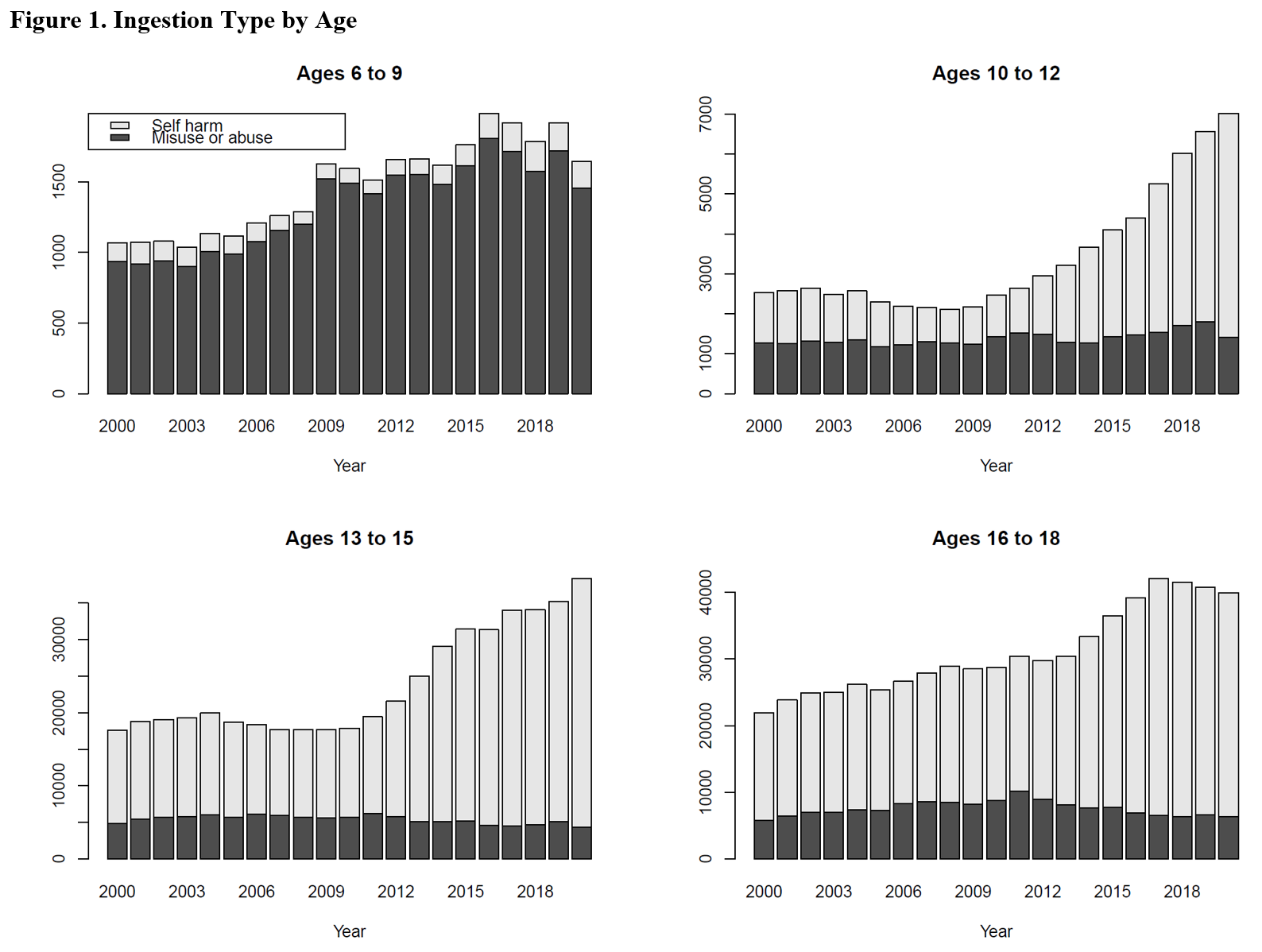Back
Mental Health
Category: Abstract Submission
Mental Health I
527 - Significant Changes in Pre-Teen Suicidal Ingestion Trends over 2 Decades
Monday, April 25, 2022
3:30 PM – 6:00 PM US MT
Poster Number: 527
Publication Number: 527.422
Publication Number: 527.422
David C. Sheridan, OHSU, Portland, OR, United States; Sara Grusing, Oregon Health & Science University School of Medicine, Portland, OR, United States; Rebecca Marshall, OHSU, Portand, OR, United States; Amber L. Lin, Oregon Health & Science University, Portland, OR, United States; Adrienne R. Hughes, Oregon Health & Science University School of Medicine, Portland, OR, United States; Robert G. Hendrickson, Oregon Poison Center, Portland, OR, United States; B. Zane Horowitz, Oregon Health Sciences University, Portland, OR, United States

David Sheridan, MD MCR
Assistant Professor
Oregon Health & Science University School of Medicine
OHSU
Portland, Oregon, United States
Presenting Author(s)
Background: Pediatric emergency department visits for suicidality account for over 1.1 million encounters per year; this number has doubled over the past decade. While attention has focused on suicidality among adolescents, another important group is pre-teens.
Objective: The objective of this study was to investigate trends over 2 decades in pre-teen suicidal ingestions. We hypothesize that calls for suicidal ingestions have increased.
Design/Methods: Data were obtained for the years 2000 through 2020 from the National Poison Data System (NPDS) maintained by the American Association of Poison Control Centers (AAPCC). Our study population included all cases of ingestion for patients aged 6 through 18 years, coded by trained poison center staff for each of three reasons: “Intentional-suspected suicide”, “Intentional-misuse”, “Intentional-abuse”. Clinical outcome was coded using a priori definitions from the NPDS coding manual: no effect, minor effect, moderate effect, major effect, or death.1 Both reason for ingestion and outcome determination are defined in the coding manual. This study was determined to not require consent and be exempt by the Oregon Health & Science University institutional review board.
Results: There were a total of 1,256,963 unique cases during the study period. There were 1,005 deaths, and 28.7% ingestions resulted in worse than minor clinical outcomes. Misuse/abuse ingestions remained relatively constant over the 20-year period, while there was a dramatic increase in suicidal ingestions. FIGURE 1 All groups over nine years of age showed an increase in suicidal ingestions, but ages 10-12 are the most dramatic, showing a 3.8-fold increase during the study period.Conclusion(s): This brief study demonstrates a dramatic increase in pre-teen suicidal ingestions over the most recent 20-year period. Figure 1 details a relatively constant number of misuse/abuse ingestions but a steady increase in suicidal ingestions in pre-teens not seen at similar rates in other age groups. The reasons for increased suicidal ingestions among younger age groups are unclear. Suicidality is multifactorial, complex, and not well understood, particularly in this population. Further research is needed to better understand factors which may be contributing to this concerning trend. In addition, this study highlights a need for better early identification of youth with mental health needs and may help in future screening guideline recommendations that extend to the preteen population.
Ingestion Type by Age
Objective: The objective of this study was to investigate trends over 2 decades in pre-teen suicidal ingestions. We hypothesize that calls for suicidal ingestions have increased.
Design/Methods: Data were obtained for the years 2000 through 2020 from the National Poison Data System (NPDS) maintained by the American Association of Poison Control Centers (AAPCC). Our study population included all cases of ingestion for patients aged 6 through 18 years, coded by trained poison center staff for each of three reasons: “Intentional-suspected suicide”, “Intentional-misuse”, “Intentional-abuse”. Clinical outcome was coded using a priori definitions from the NPDS coding manual: no effect, minor effect, moderate effect, major effect, or death.1 Both reason for ingestion and outcome determination are defined in the coding manual. This study was determined to not require consent and be exempt by the Oregon Health & Science University institutional review board.
Results: There were a total of 1,256,963 unique cases during the study period. There were 1,005 deaths, and 28.7% ingestions resulted in worse than minor clinical outcomes. Misuse/abuse ingestions remained relatively constant over the 20-year period, while there was a dramatic increase in suicidal ingestions. FIGURE 1 All groups over nine years of age showed an increase in suicidal ingestions, but ages 10-12 are the most dramatic, showing a 3.8-fold increase during the study period.Conclusion(s): This brief study demonstrates a dramatic increase in pre-teen suicidal ingestions over the most recent 20-year period. Figure 1 details a relatively constant number of misuse/abuse ingestions but a steady increase in suicidal ingestions in pre-teens not seen at similar rates in other age groups. The reasons for increased suicidal ingestions among younger age groups are unclear. Suicidality is multifactorial, complex, and not well understood, particularly in this population. Further research is needed to better understand factors which may be contributing to this concerning trend. In addition, this study highlights a need for better early identification of youth with mental health needs and may help in future screening guideline recommendations that extend to the preteen population.
Ingestion Type by Age

